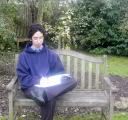Graduate 142: BT 14: Introduction to Part One, Division One
Division 1. Preparatory Fundamental Analysis of Dasein
[Introduction]
"In the question about the meaning of Being, what is primarily interrogated is those entities which have the character of Dasein. The preparatory existential analytic of Dasein must, in accordance with its peculiar character, be expounded in outline, and distinguished from other kinds of investigation which seem to run parallel (Chapter 1.) Adhering to the procedure which we have fixed upon for starting our investigation, we must lay bare a fundamental structure in Dasein: Being-in-the-world (Chapter 2). In the interpretation of Dasein, this structure is something 'a priori'; it is not pieced together, but is primordially and constantly a whole. It affords us, however, various ways of looking at the items which are constitutive for it. The whole of this structure always comes first; but if we keep this constantly in view, these items, as phenomena, will be made to stand out. And thus we shall have as objects for analysis: the world in its worldhood (Chapter 3), Being-in-the-world as Being-with and Being-one's-Self (Chapter 4), and Being-in as such (Chapter 5). By analysis of this fundamental structure, the Being of Dasein can be indicated provisionally. Its existential meaning is care (Chapter 6)." (BT 65/40)
We must continue to keep before our minds just why Dasein is the best starting point for this investigation into the meaning or sense of being as such. Also, of note, is the fundamentally different orientation of his approach to the structure of Dasein. Human beings are to be understood fundamentally in terms of their being-in-the-world. Interestingly, Heidegger refers to this structure as something a priori and as that which "affords us... various ways of looking at the items which are constitutive for it." I am, personally, especially interested in this point--about how this structure causes or allows things (phenomena) in the world to "stand out". Finally, Heidegger will identify the structure of the being of Dasein as care, and that will serve as the launching point into Division Two.
--
God is in this place,
And that reality, seen and understood by the grace of God in Christ Jesus through the work of the Holy Spirit, makes all the difference in the world.


0 Comments:
Post a Comment
<< Home